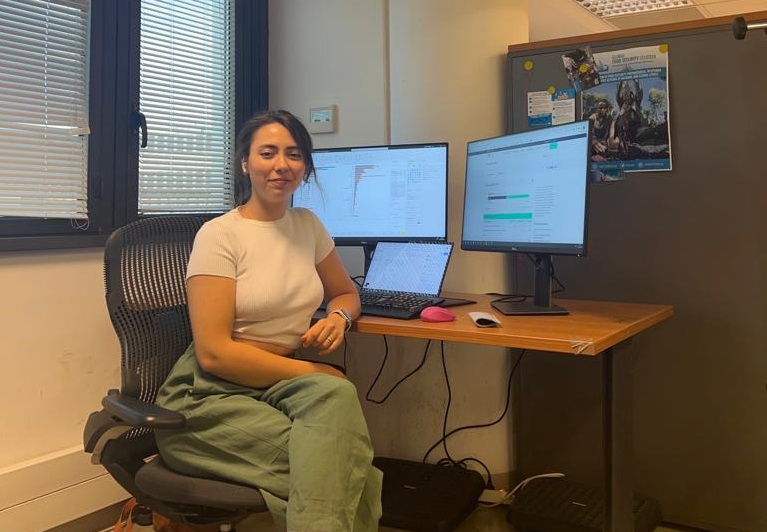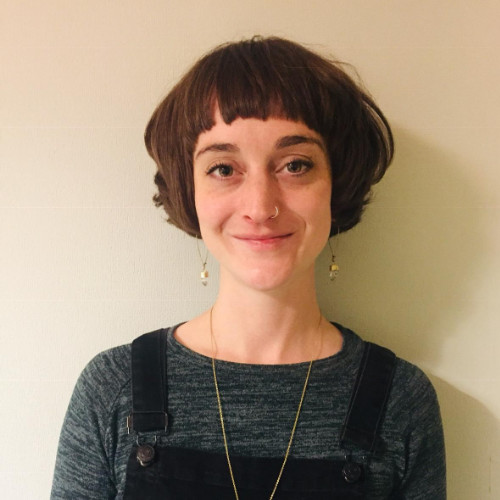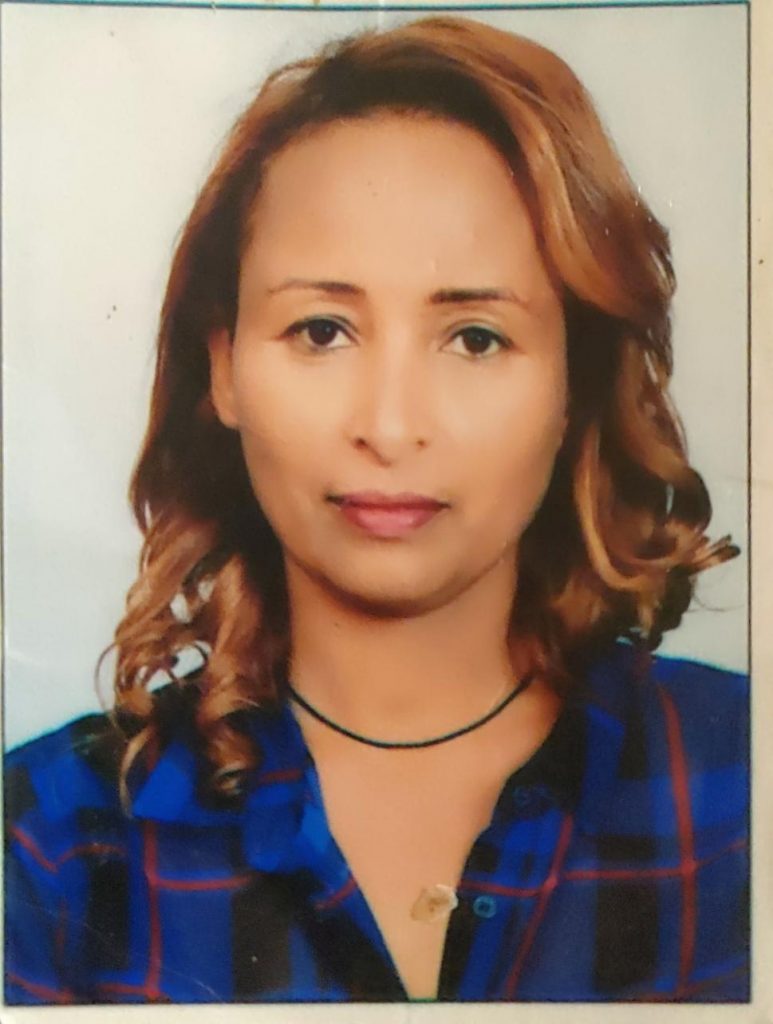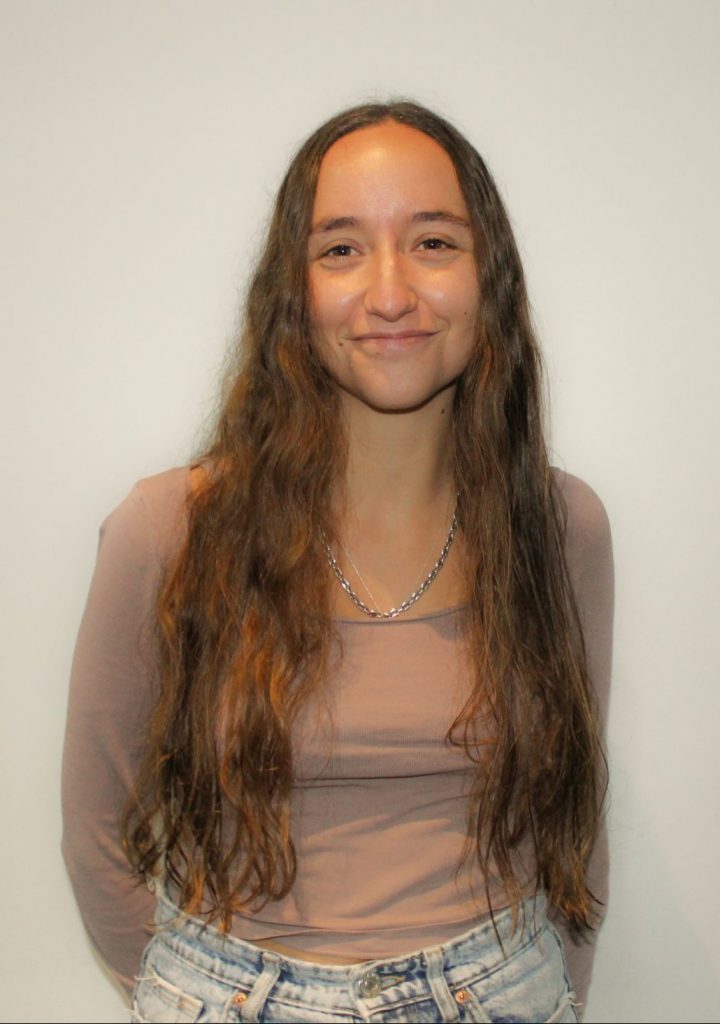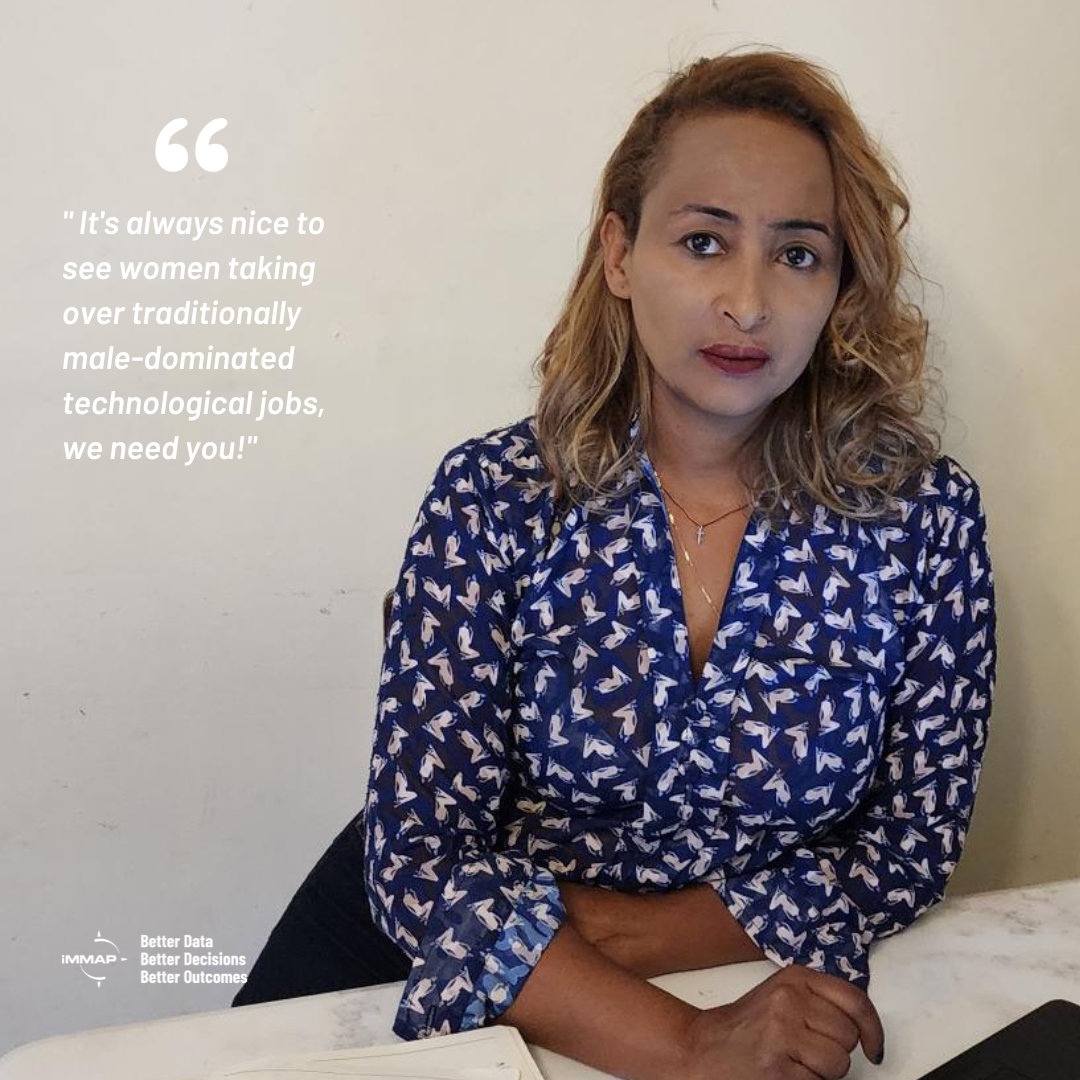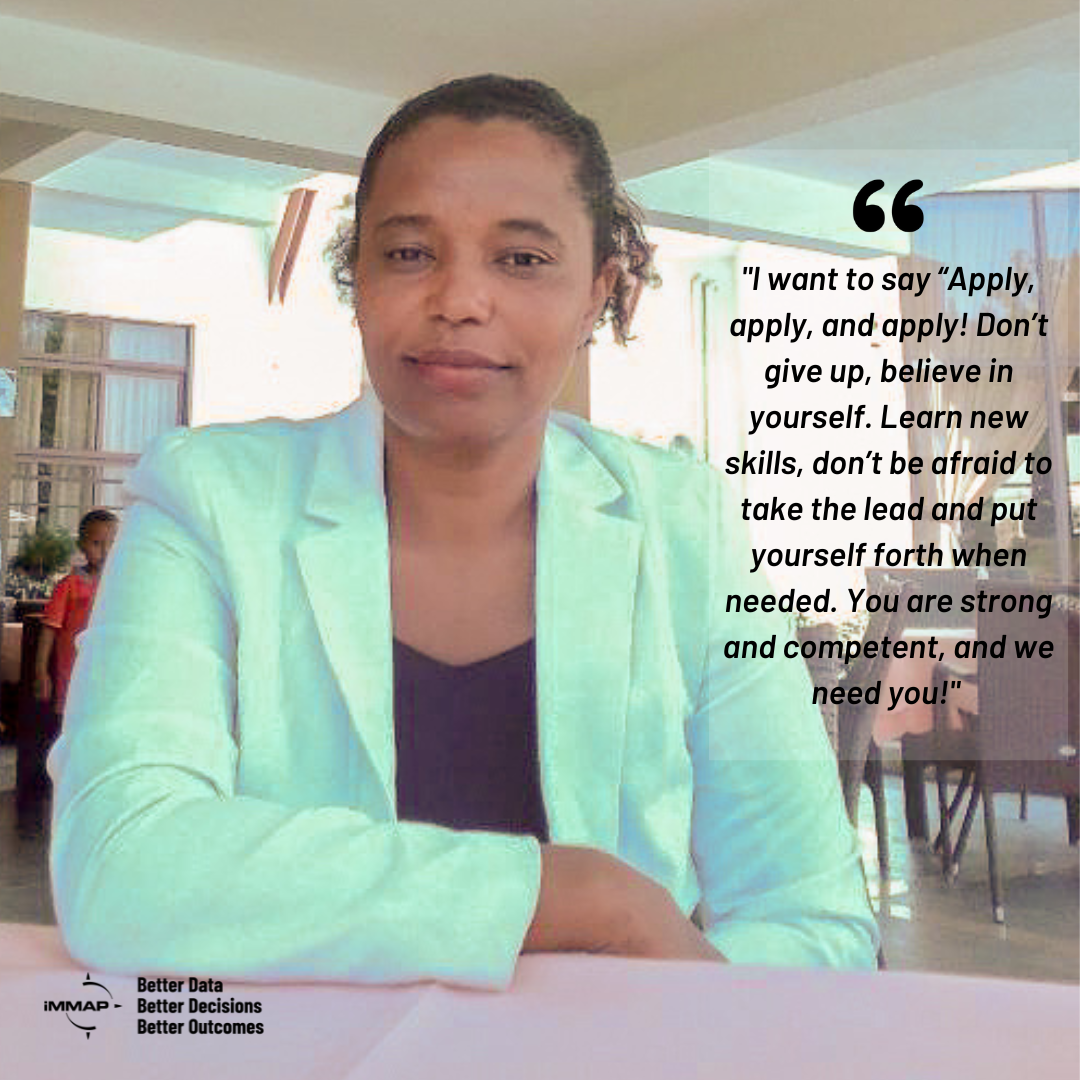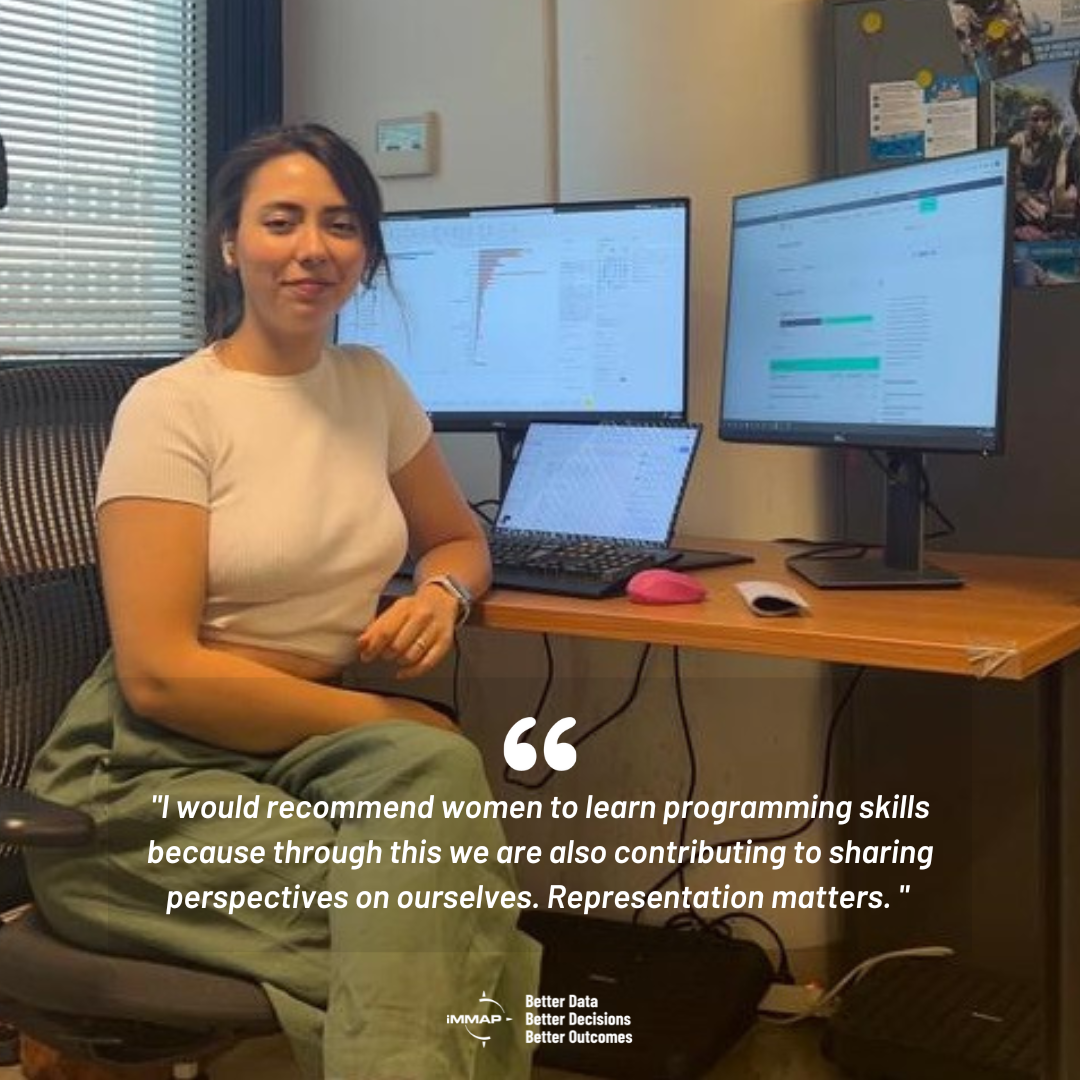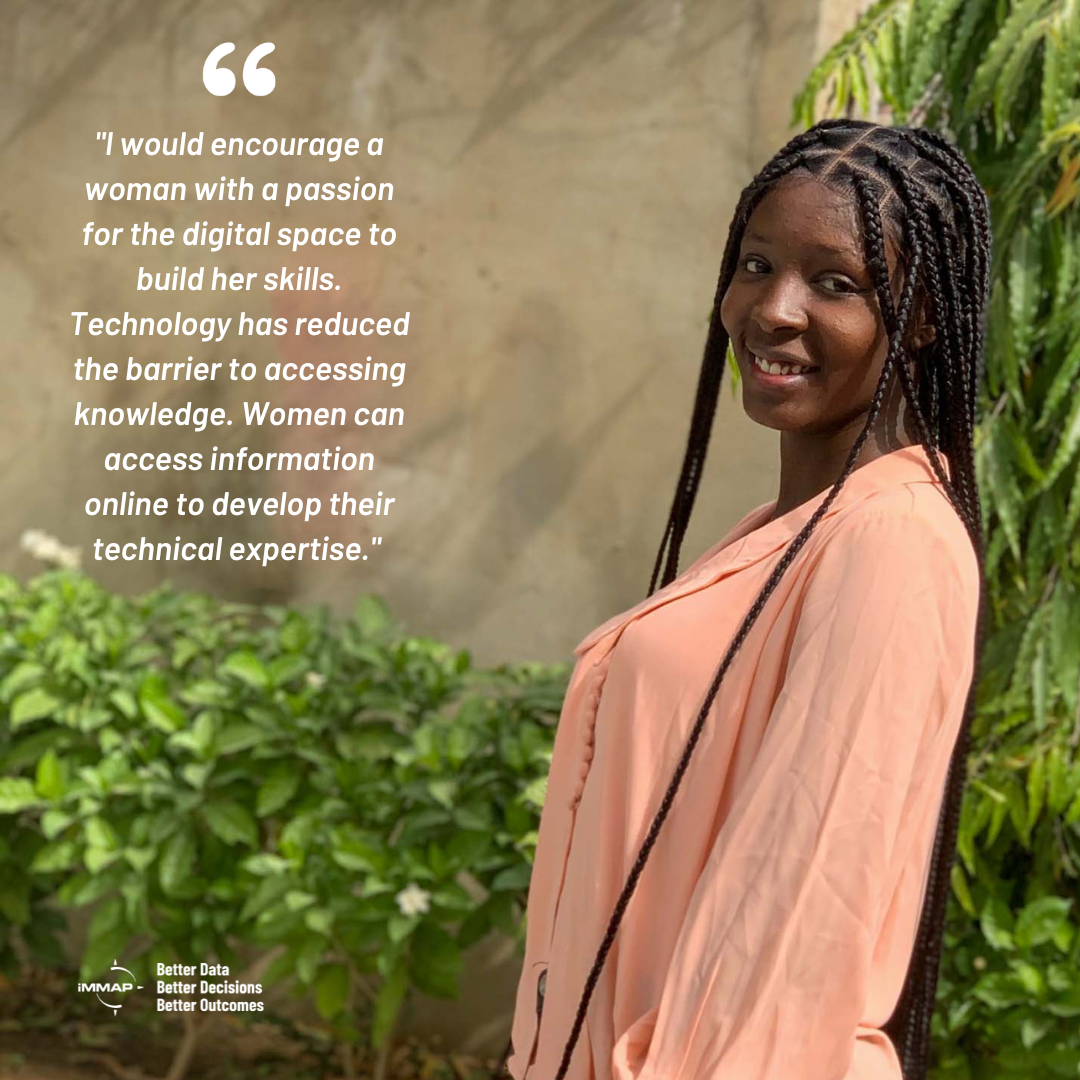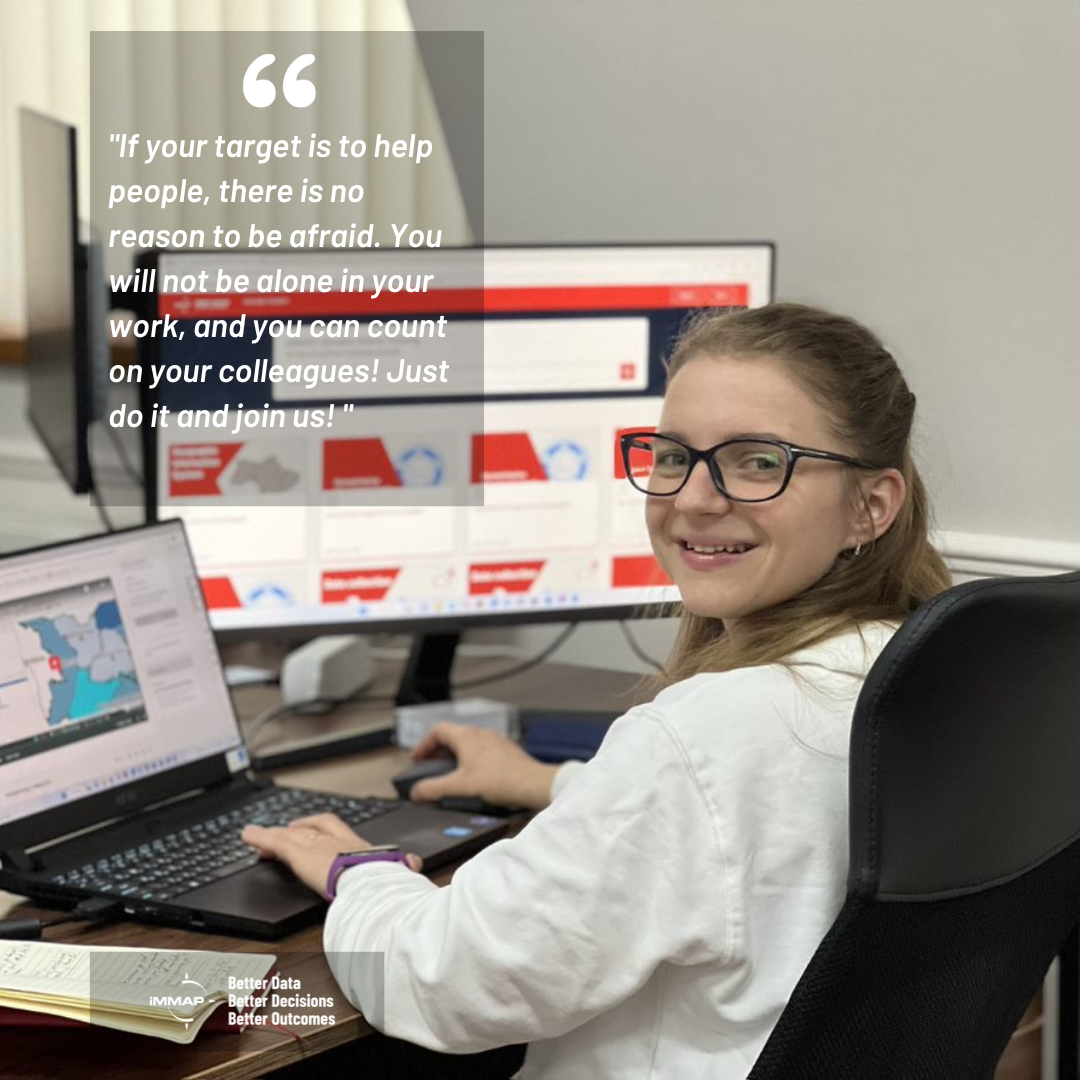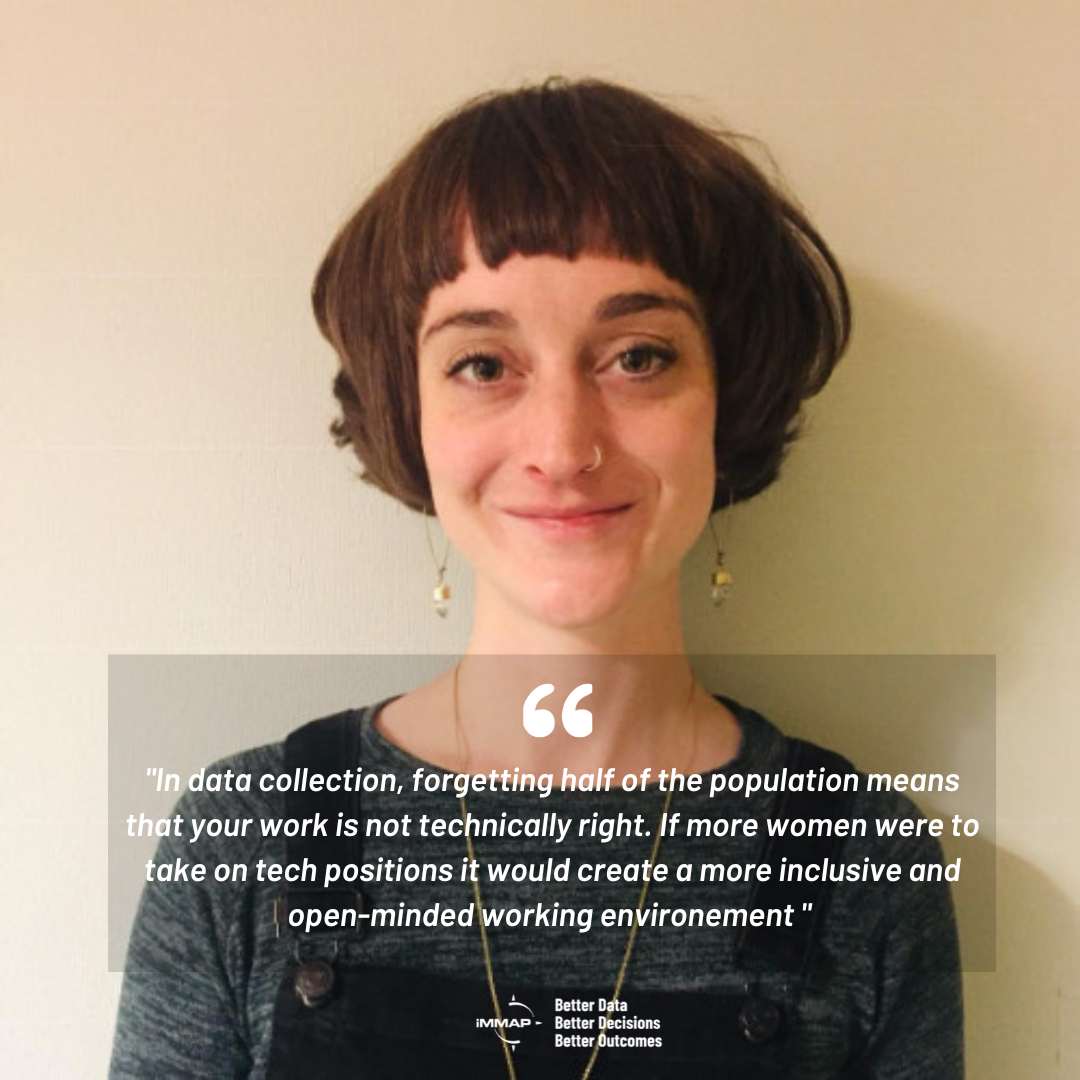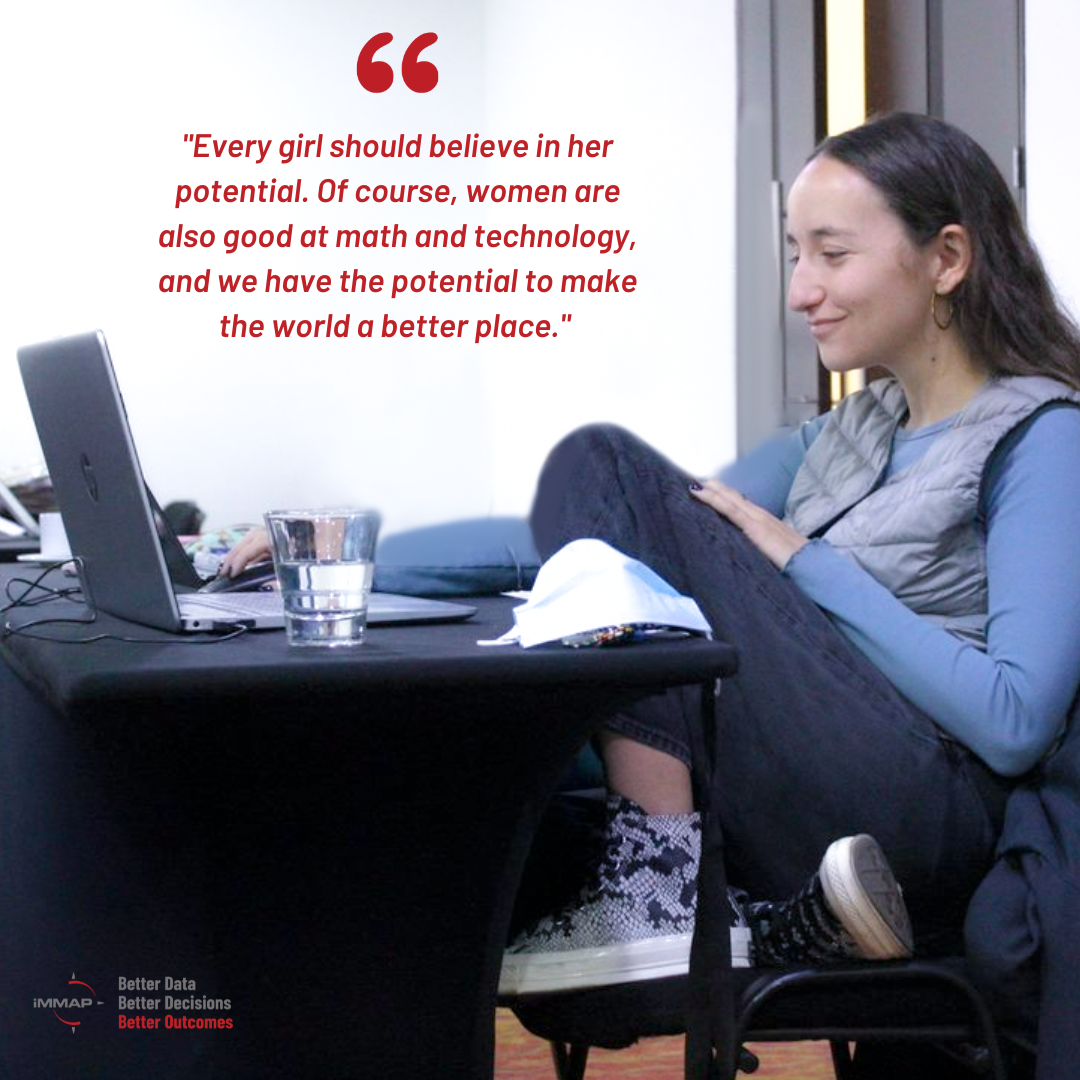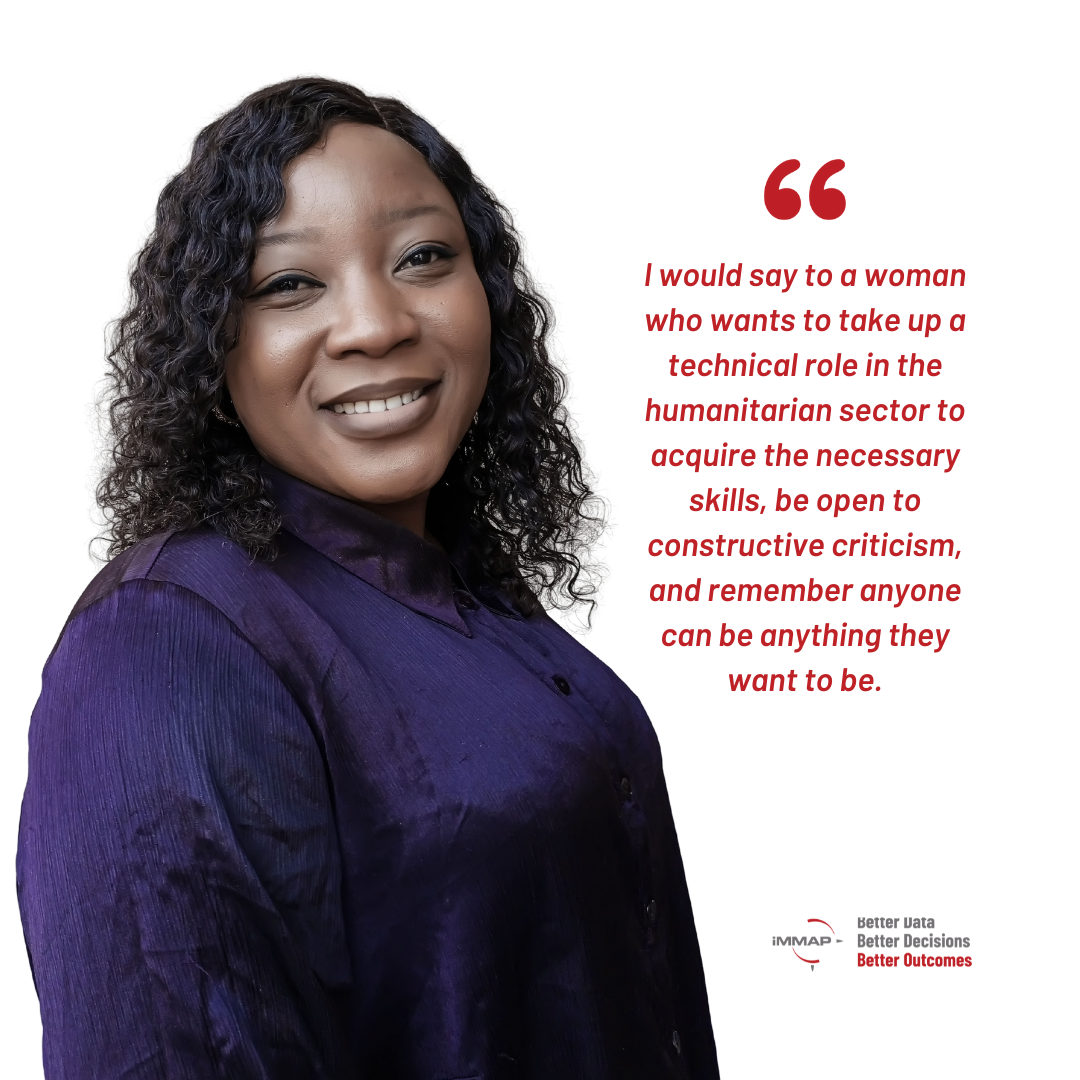Technology is changing the world! It has made humanitarian work more effective, allowing stakeholders to connect and coordinate, and transforming response operations. At iMMAP, we are leading the way by using the latest innovations to deliver data services and create insightful information products. By harmonizing and visualizing data, we help humanitarian partners scale up their response efforts to achieve the best possible outcomes. By making evidence-based decisions, we can make a real difference in the world.
The tech industry continues to suffer from a persistent gender gap. The share of women in computer science has decreased from 37% in 1984 to 22% in 2022. Women are also less likely to be promoted to management roles and earn only 85% of what men earn in technology jobs.
Fortunately, some women working in technology are leading the way to gender equality in the industry. On International Women’s Day, we would like you to meet 13 of our most amazing iMMAP women who are rolling up their sleeves and using technology to bring exceptional expertise to humanitarian response around the world.



